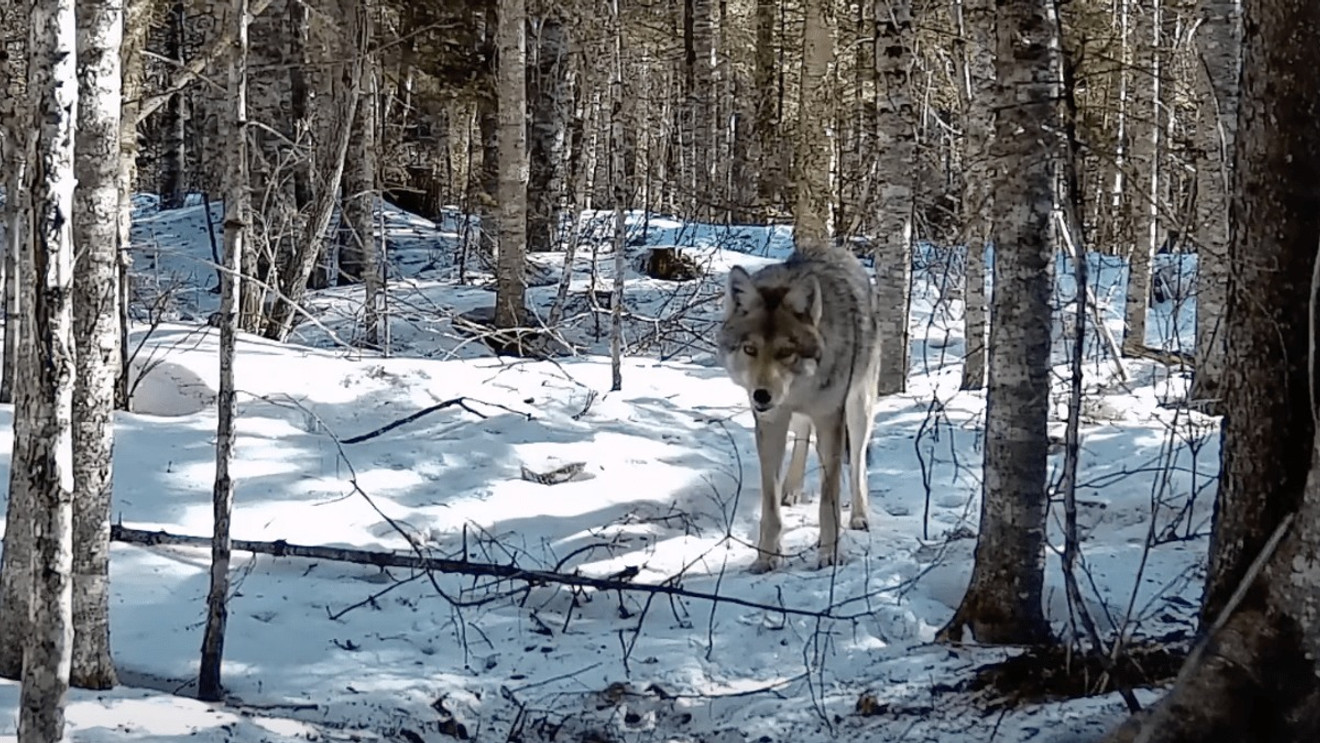A local organization has caught a possible wolf sighting on camera in the northern Maine woods recently, sparking a debate on whether or not wolf populations exist in the state.
According to the state, although individual wolves might pop up from time to time, there haven’t been any breeding wolf populations since Wolves were eradicated from Maine in the 1900s, often through government-sponsored killing programs. The animals were viewed as a threat to livestock and killed through hunting, trapping and poisoning.
But according to the Bangor Daily News, the South China-based Maine Wolf Coalition, a group of five volunteers and a wildlife biologist, who regularly set up trail cameras and search the woods looking for scat samples in Maine, have reported that they’ve had both photo evidence of wolves, saying that at least 4 are present in the state, as of the latest discovery. When the MWC tested the scat of the third wolf they found in 2019, the DNA inside the scat confirmed their suspicions: the animal had 84% Eastern Wolf ancestry.
But there is debate among the scientific community over whether an eastern wolf is even considered a wolf species. The Maine Department of Inland Fisheries and Wildlife, which also reviewed the report, said it considers the animal to be a hybrid species, not a wolf. However, there is no agreed-upon standard for DNA samples or a threshold for what is considered a hybrid species, according to Nathan Webb, the director of the wildlife division at the Maine Department of Inland Fisheries and Wildlife.
“There is no scientific or regulatory consensus on the genetics of wolves in the Northeast as to how to definitively distinguish between an eastern coyote and an eastern wolf, or whether an eastern wolf represents a distinct wolf species or a hybrid,” Webb said.
John Glowa, the president of the coalition responded by saying that “Eighty-four percent is a very high percentage, and we would not consider it a hybrid. “There are very few if any pure eastern wolves left on the planet due to their historic interbreeding with coyotes.”
Some experts say that wolves could be coming into the northeastern United States by crossing the frozen St. Lawrence River as they make their way south through Canada, with the coalition believing multiple wolves have been killed in the Northeast states, most recently in New York in 2021, because they were mistaken for coyotes by hunters.
So far the coalition has collected 170 scat samples throughout northern and western Maine, and is awaiting results from Michigan Technological University, he said. Glowa expects there will be additional wolves documented through this testing.
“We have proven that wolves are here, but the government won’t acknowledge them,” he said.
To read the original Bangor Daily News Article, click here.






